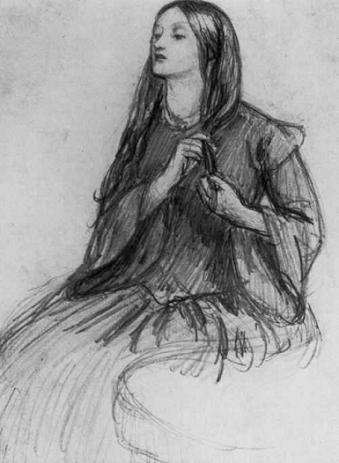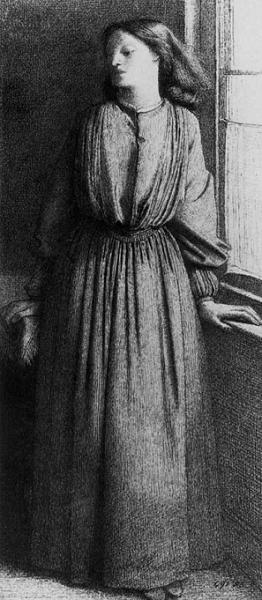-�����
-�������
- ������� �������� (16)
- ���������� PROSERPINA (3)
- BEATA BEATRIX (2)
- LADY LILITH@SYBILLA (2)
- ��� �� ������� (1)
- BOCCA BACIATA (1)
- ��˨��� ������ (1)
- REGINA CORDIUM QUEENG of HEARTS (1)
- THE BLESSED DAMOSEL ��������������. (1)
- ASPECTA MEDUSA (1)
- ���� � ����. The Lady of the Window. (1)
- ������� ��������. Vision of Fiammetta. (1)
- ������� �����. The Day Dream � The Bower Meadow (1)
- ����� ����. THE BODY PARTS. (13)
- ������ � ��������� (5)
- ��������� ��������� (4)
- ����� � ����� ��������� ����� �����. (3)
- ���������� �����. (1)
- ������ �������� (11)
- ����� ������ ������ JANE MORRIS BURDEN (4)
- ����� �������� (2)
- ���� ������ ANNIE MILLER (1)
- ������ �������� ALEXA WILDING (1)
- ����� � �������� �����. (9)
- HANNIBAL LECTER (5)
- �������� �������� (5)
- �������� �������� Christina Rossetti ������ poems (3)
- ART DECO (4)
- ������� ��������� (1)
- ������ �������� (1)
- ��� � ����� ���� ��? (4)
- �������� ������ (4)
- ����� ������. (3)
- ��� ��������. My paintings. (3)
- ������ (1)
- ������� �������� (1)
- ������ ���������� (1)
- ����� ������������ (1)
- ����� � �������� (1)
- ��������� (1)
- ������ ����� ��������. The full list of Rossetti's (1)
- DOUBLE WORKS (1)
- ������ ������ (2)
- ������������ (39)
- ��� ������������ (11)
- ������� �� ������������� (4)
- �������� (3)
- ������������ � ������ (2)
- ��������. ROSSETTI. (50)
- �������� ����� ROSSETTI LIFE (43)
- ���� ������ �������� � ��� ������ (1)
- �������� �� ������� (1)
- ������ �������� (1)
- ����� �����. MUSEUMS. SITES. (15)
- ������������ (3)
- �������������� ����� ��������. (3)
- ��� ������� (3)
- ������������ ����� (1)
- ��� ������ (62)
- �������� 2 (45)
- ����� "�������" (9)
- �� ���� (3)
- ����������� (1)
- Novels, English versions. (1)
- ��� ����� (1)
- ������� (1)
-������
- ��� ��� �������
- �������: 169 �����������: 0
- ������ �����
- �������: 188 �����������: 1
-����� �� ��������
-��������
-����������
-����������
�������� 1854 |
�������� 1854
The Working Men's College was founded by a group of Christian Socialists led by the Rev. F.D. Maurice in 1854, to supply a liberal education to London working men. As is well known, Ruskin and Rossetti were both associated with the College in its early years.
Art classes were takenby 'Rossetti, Madox Brown, Stacy Marks, Cave Thomas, V. Prinsep, and Arthur Hughes.
Another recollection is given by J.P. Emslie, who joined the drawing class in 1856. It was conducted by three teachers, Ruskin, Rossetti, and Lowes Dickinson. Ruskin taught the beginners, passing them on to Rossetti and Dickinson when they wefe ready to progress to 'water-colour painting and figure-drawing from the Iife:3 Ruskin seems to have been a good teacher, 'patient and indefatigable, [who] greatly interested himself in the development of whatever gift each particular pupil might possess.'4 He was friendly, helpful, and modest, passing the students on to his colleagues with the remark, '1 understand what is good and bad colour, but I wouldn't undertake to teach it, and as to figure painting, it's a thing that requires a lifetime of practice. By contrast, Rossetti liked 'to show by example how to paint, throwing the pencil with apparent recklessness about the paper .. . He was 'tremendously popular with his pupils ... they regarded him personally with great affection. But he did not like his pupils to join any other classes which were not connected with art; when one of them took up the study of algebra, Rossetti 'urged him to give it up, and asked him what use algebra could be to painting."

����� �������� �������� ��������, ������������� ������ 1854 �. ������� ����, ������
����� �������� �������� ��������, �������� ����� 1854 �. ������� ����, ������
����� �������� �������� �������� ������, ������� � ���� 1854 �. ����� �������� � ��������, ������
����� �������� �������� ������� �.������ 1854 �. ����� �����������
����� �������� �������� ��������, ������������� ������ 1854 �. ������� ����, ������
����� �������� �������� ��������, �������� ����� 1854 �. ������� ����, ������
����� �������� �������� �������� ������, ������� � ���� 1854 �. ����� �������� � ��������, ������
����� �������� �������� ������� �.������ 1854 �. ����� �����������
Portrait of Elizabeth Siddal, 1854
The Maids of Elfen-Mere 1854
This pen and ink drawing for Allingham's poem presents a distinctive imagining of the text. The notes for the 1897 New Gallery exhibition (no.17) offer the following description: “Small full-length figure of a youth seated at a table and listening in rapt mood to the chaunt of four mystic supernatural women in shadowy forms before him. A design made for the frontispiece of Allingham's Day and Night Songs
 As an illustration for William Allingham's ballad The Maids of Elfen-Mere , the picture is involved with the stories of the nixies, or water sprites, out of Northern mythology. These women are regularly associated with the Parcae, or Fates—an association that DGR specifically incorporates into his picture's intense and “enigmatic relationship between the Maidens and their suitor” (Life 87). The ballad and its illustration clearly recall the tradition epitomized for DGR in Keats's La Belle Dame Sans Merci .
As an illustration for William Allingham's ballad The Maids of Elfen-Mere , the picture is involved with the stories of the nixies, or water sprites, out of Northern mythology. These women are regularly associated with the Parcae, or Fates—an association that DGR specifically incorporates into his picture's intense and “enigmatic relationship between the Maidens and their suitor” (Life 87). The ballad and its illustration clearly recall the tradition epitomized for DGR in Keats's La Belle Dame Sans Merci .
�������� �������������� ������� ������� ���������. � ��� �������������� � ������ ��������� ��������� ���� �������. �� ����������� ����� ��� ����� � ���� �����, � ����� ��������. ������� �������� �������� ������ � ������, � �������� �� ������� ���������� ���. ��� ���� ������������ �� ������� ���������, ������� �� ����� ��������� ����. ����� ����� ��� ������� ������ �� ����������, � ��� ������� ���� �� ��������� ������. ����� �������� �������� ������ ������� � ���� �������,
� 1855-� ���� ��������, ����������� The Music Master of Willian Allinham ������ �������, ������� ������ ����� ��� ��������� ����������. � ������� ������������ ������ ��������, ������� ����� ����� �� ��� ���������� ������� ��������: ����� ���������������, ������ ��� �� ������� � ���� ����� ��������� ����, ������ ���� �� ����� �������� � ����� ��� �������� ������������ ������� - ���������� �� ���, ���� ������� ������������, � ������������� ���������. ������ ������������� �������. ����� ������������� � �������, ��������� �������� ������ ���������� � ������� ������ �� ��� �������� � ����������� �������� ���. ��������� ������������� ������� ������� �� ������ � �������������� ������� ��������, ����� ������, ��� ������� ���������� ��� ������������ �����. �������� ���������� �����, ���������� � ���������, ����� ���������� ������� � �����������.
 DGR was extremely unhappy with the woodcut when he first saw it, and was never completely satisfied; but after initially refusing to see his drawing appear in its woodcut version, he eventually relented and the work was published.
DGR was extremely unhappy with the woodcut when he first saw it, and was never completely satisfied; but after initially refusing to see his drawing appear in its woodcut version, he eventually relented and the work was published.
�������� ������ ���� 1854 ������������ ������ � ������ ���������� (��������)

| �������: | ��������. ROSSETTI./�������� ����� ROSSETTI LIFE |
| �������������� | « ����. ������ — � �������� — ����. ������ » | ��������: [1] [�����] |









